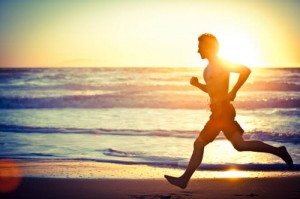Sports massage has many beneficial effects in athletes. Sports massage can be used pre-performance, post-performance, during training or for rehabilitation. Athletes of all levels may benefit from sports massage. If you are looking for a way to improve your athletic performance, then sports massage may be for you. Learn more about the possible performance enhancing effects of sports massage.
Sports Massage: Background
 Sports massage is a systematic manipulation of the soft tissues of the body that focuses on muscles relevant to a particular sport. Runner Paavo Nurmi, known as the “Flying Finn,” was one of the early users of sports massage. Nurmi is said to have used sports massage during the 1924 Olympics in Paris where he won five gold medals. In the United States, Jack Meagher is thought to be the father of sports massage in the United States.
Sports massage is a systematic manipulation of the soft tissues of the body that focuses on muscles relevant to a particular sport. Runner Paavo Nurmi, known as the “Flying Finn,” was one of the early users of sports massage. Nurmi is said to have used sports massage during the 1924 Olympics in Paris where he won five gold medals. In the United States, Jack Meagher is thought to be the father of sports massage in the United States.
For many years now, elite athletes and sports teams have been utilizing all the benefits of massage and soft tissue manipulation in their paramedical therapy. Athletes like Emmit Smith and Joe Montana, who both had long careers in the NFL, attribute their longevity in part to their regular program of strength training, conditioning and massage therapy. The wide spread acceptance of soft tissue manipulation has since filtered down to college and university teams, as well as younger athletes. Depending on how comprehensive the coach and/or team administration wants to be, massage therapy continues to play an integral part in keeping athletes healthy, and shortening their recovery time when injured.
Here in North America, we are experiencing a phenomenon where our children are playing one sport year round. In contrast to past decades when they would play hockey and/or ski in the winter, do track in the spring and then travel with their families or play soccer or baseball in the summer, more kids now seem to be either playing one sport year round or engaging in training for that sport in the off season. This mimics professional athletes. These kids now would seem to benefit from a similar approach to their professional counterparts with respect to managing their health. Having massage therapy included in their training regimen becomes crucial to avoiding serious biomechanical and soft tissue issues in the future.
Many different movements and techniques are used in sports massage. Examples of these techniques include; Swedish style massage, effleurage (stroking), petrissage (kneading), compression, friction, tapotement (rhythmic striking), vibration, gliding, stretching, percussion and trigger points. These movements and techniques are used to try to help the athlete’s body achieve maximum performance and physical conditioning with a decreased chance of injury or pain and a quicker recovery.
Sports Massage: The Research
Now that you know the reported benefits of sports massage, let’s find out if the research studies support those benefits. Research studies regarding perceived fatigue and recovery showed that subjects felt they were less fatigued and felt like they recovered faster after sports massage. Decreased anxiety, improved mood and well-being were also noted. Delayed onset muscle soreness (DOMS) decreased by about 30% in one research study. Other studies support the finding that DOMS does decrease after sports massage.
Now for some benefits that are not supported by research. The ability of sports massage to help the muscles get rid of lactic acid is not supported in research studies. Many researchers feel this is linked to the fact that increased blood flow to muscles after sports massage cannot be supported either. A quicker recovery after sports massage is not yet supported by the research. Studies do support that active recovery (low-intensity exercise after work-out) is the best method of decreasing the amount of lactic acid that builds up after exercise and speeds recovery.
So what does all of this mean? It seems that the positive mind (psychological) benefits of sports massage are indeed supported by research studies. Study findings also support that sports massage does not negatively effect performance, but the positive body (physiological) benefits on performance are not quite as clear. More research is needed on the positive body effects and also on the mind/body interaction after sports massage.





